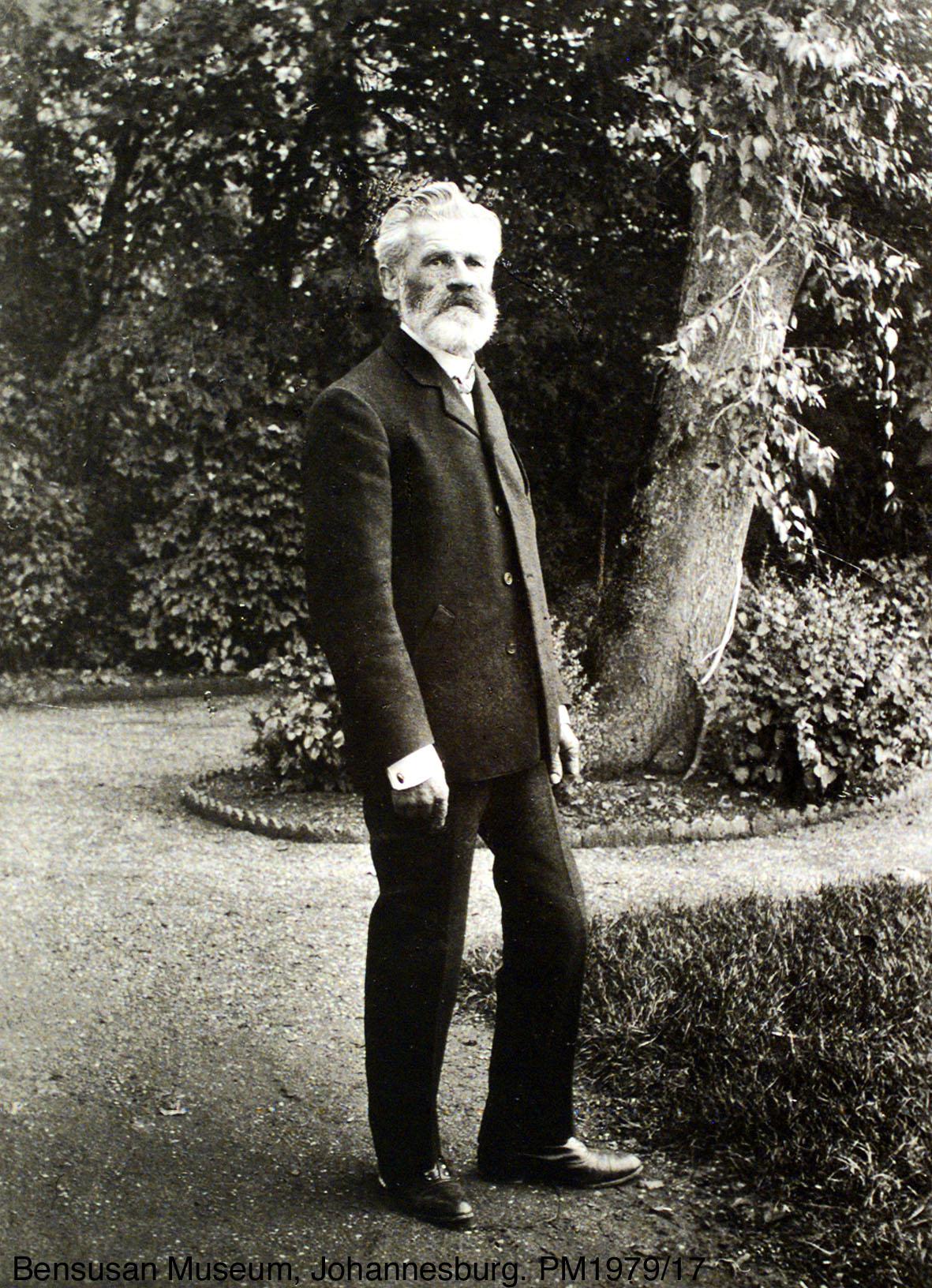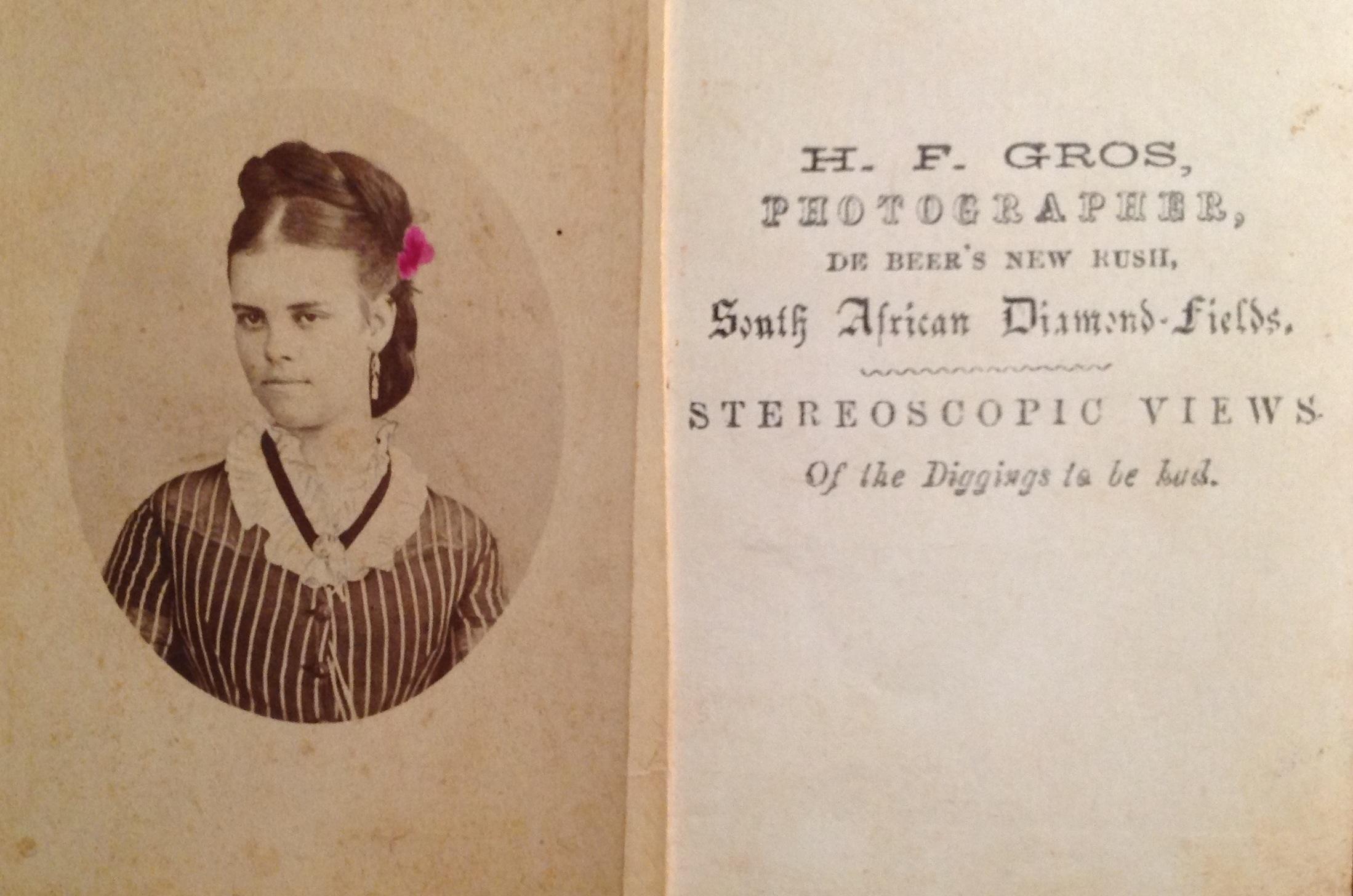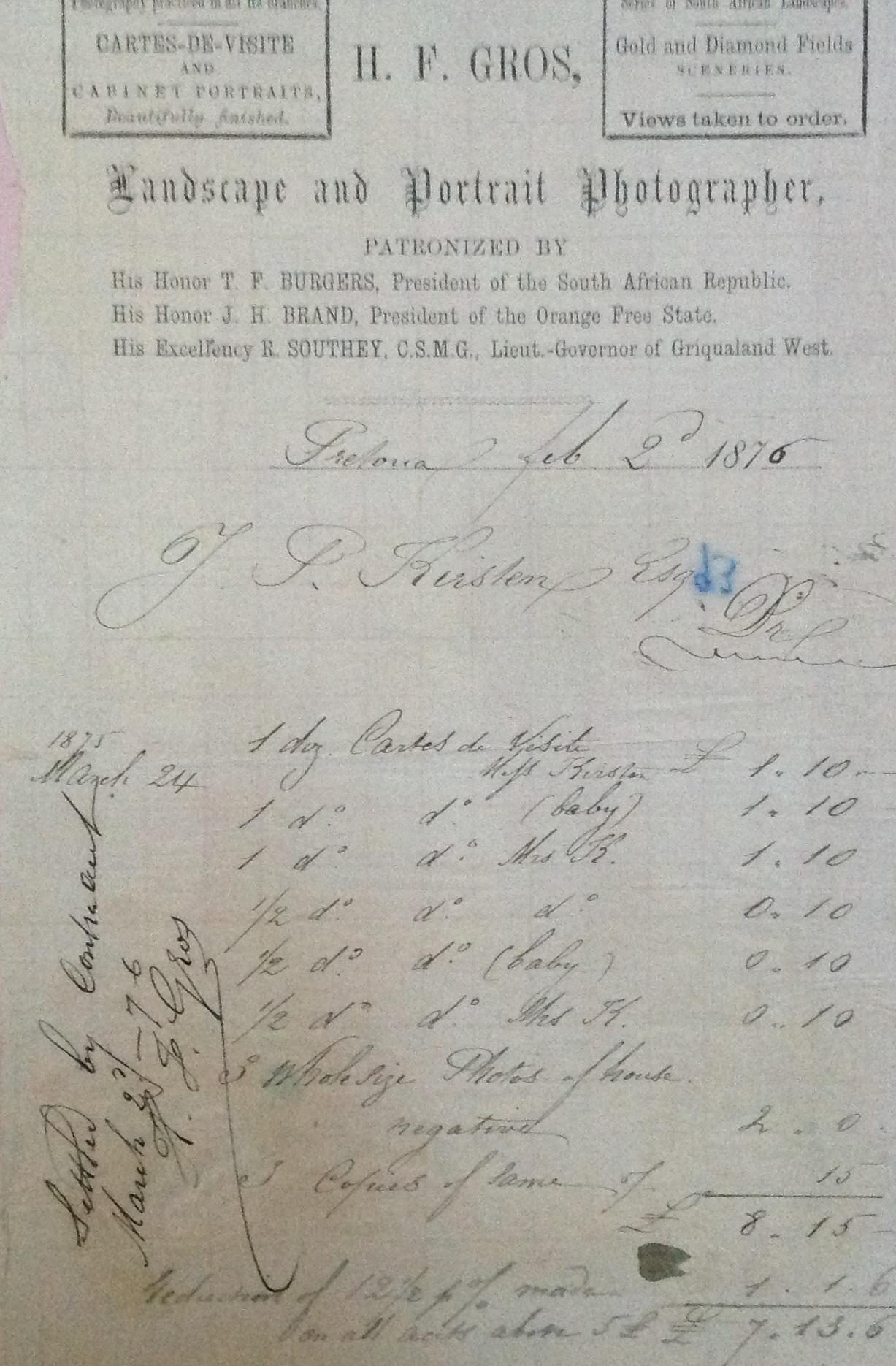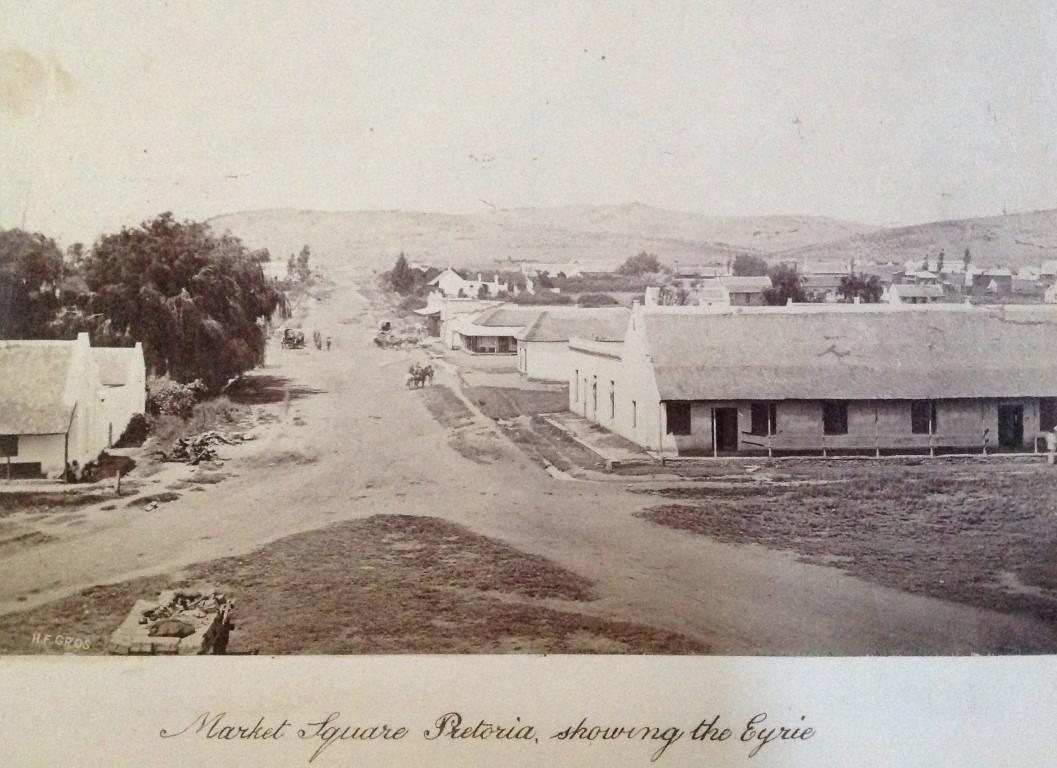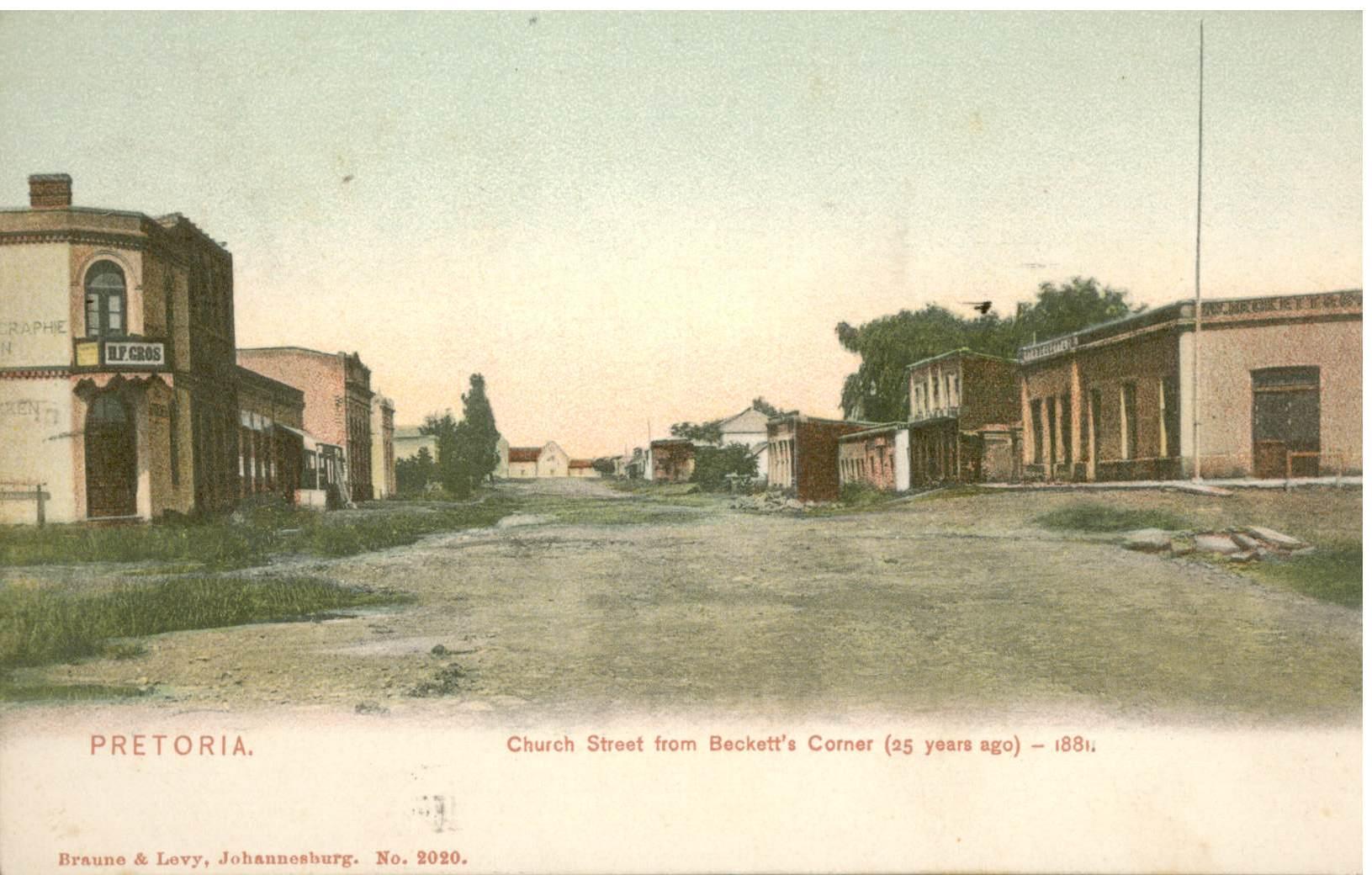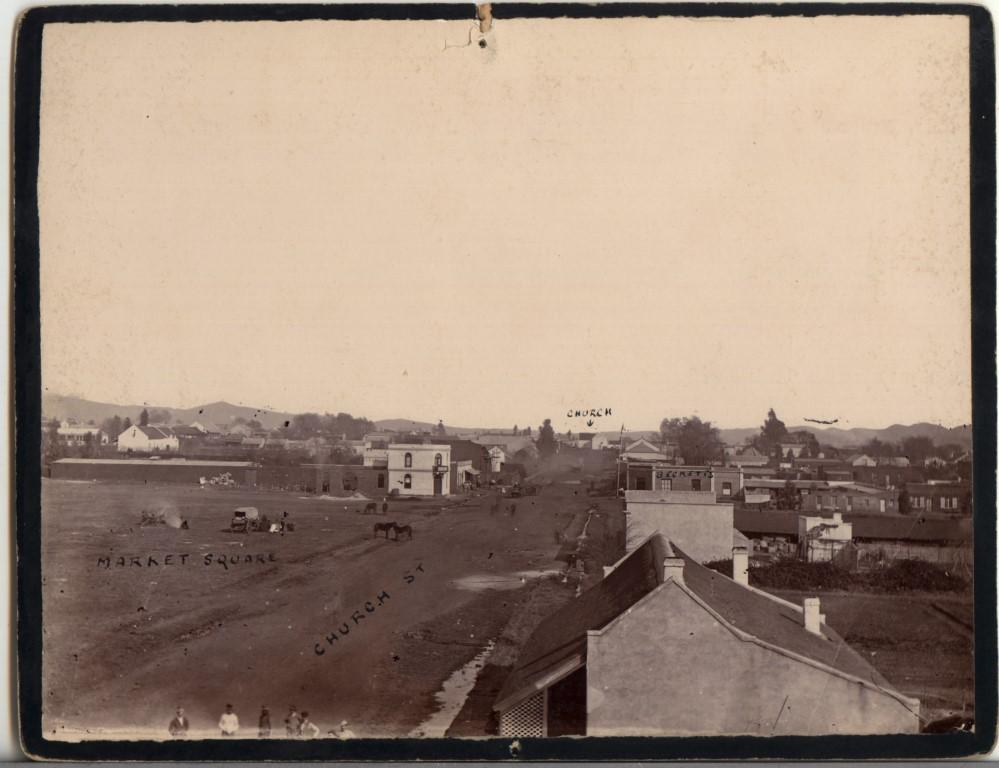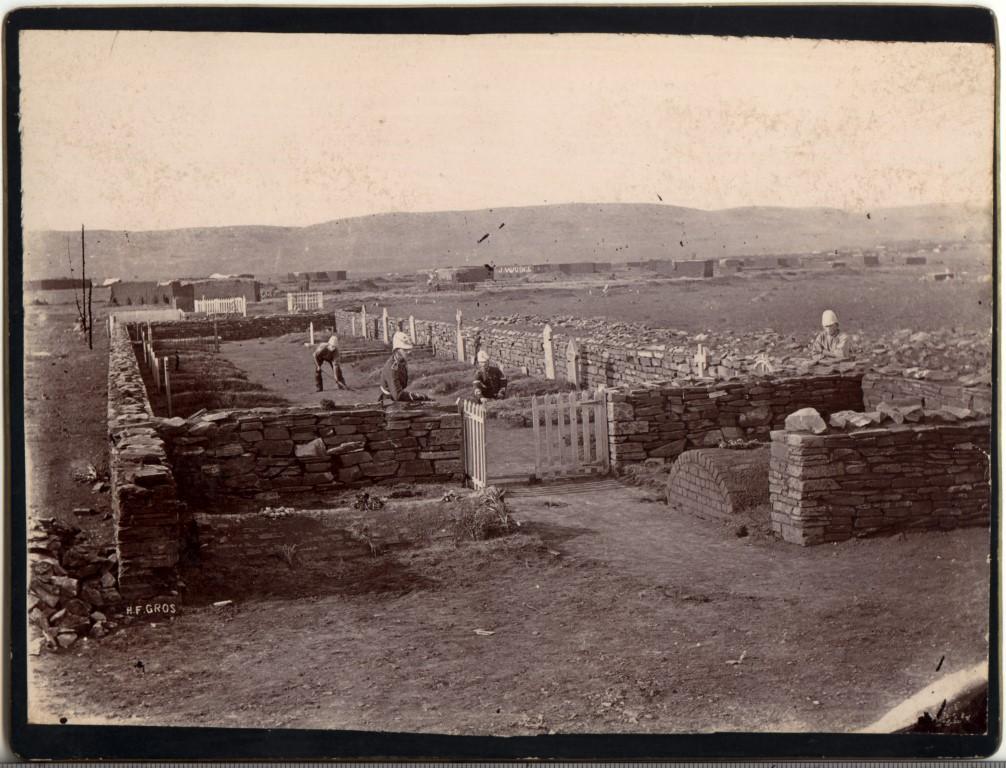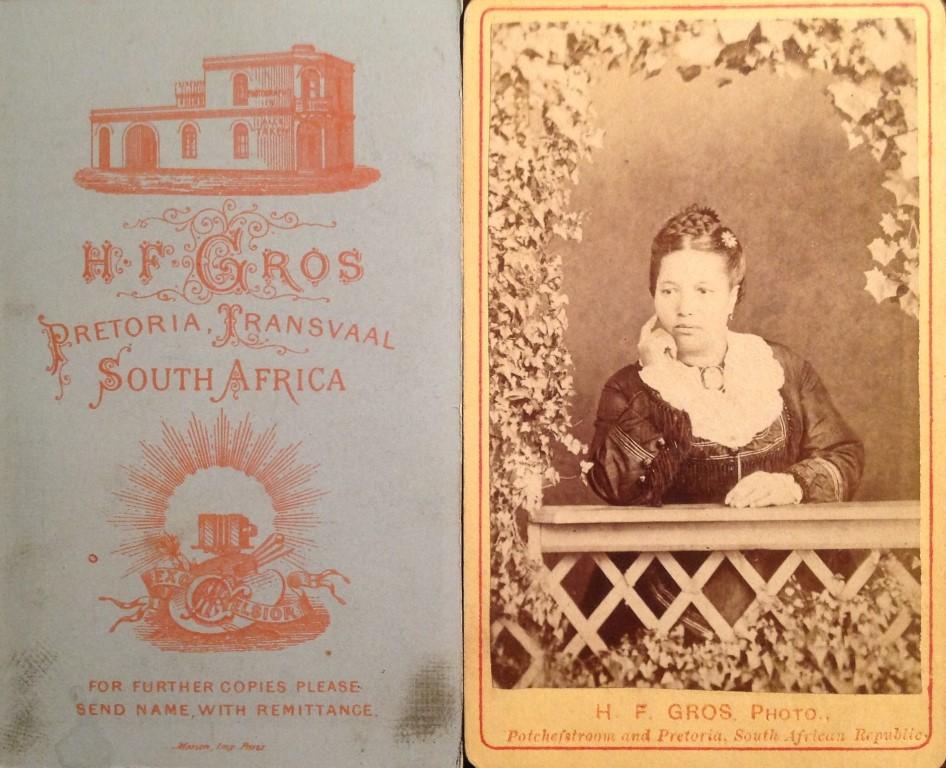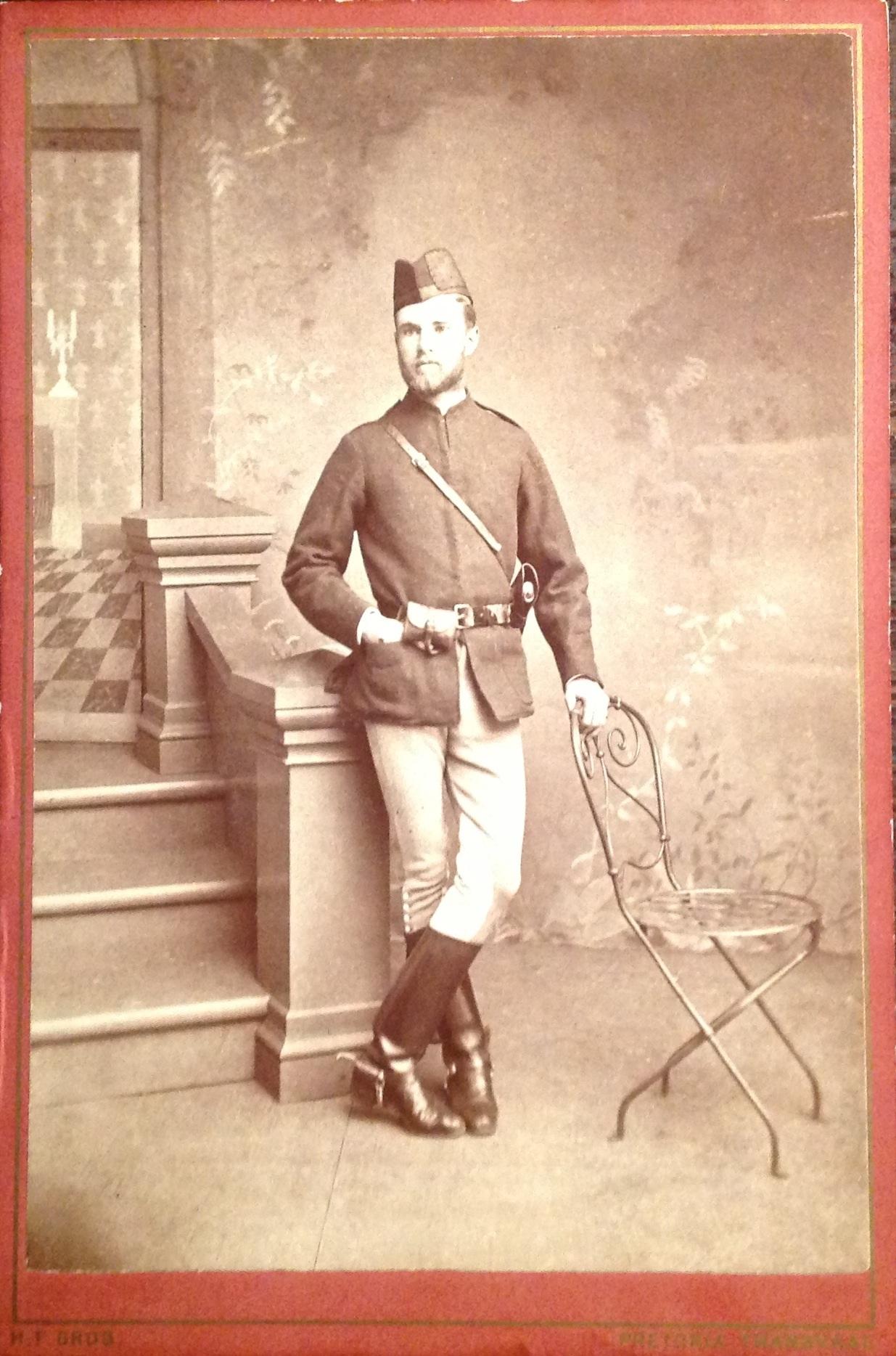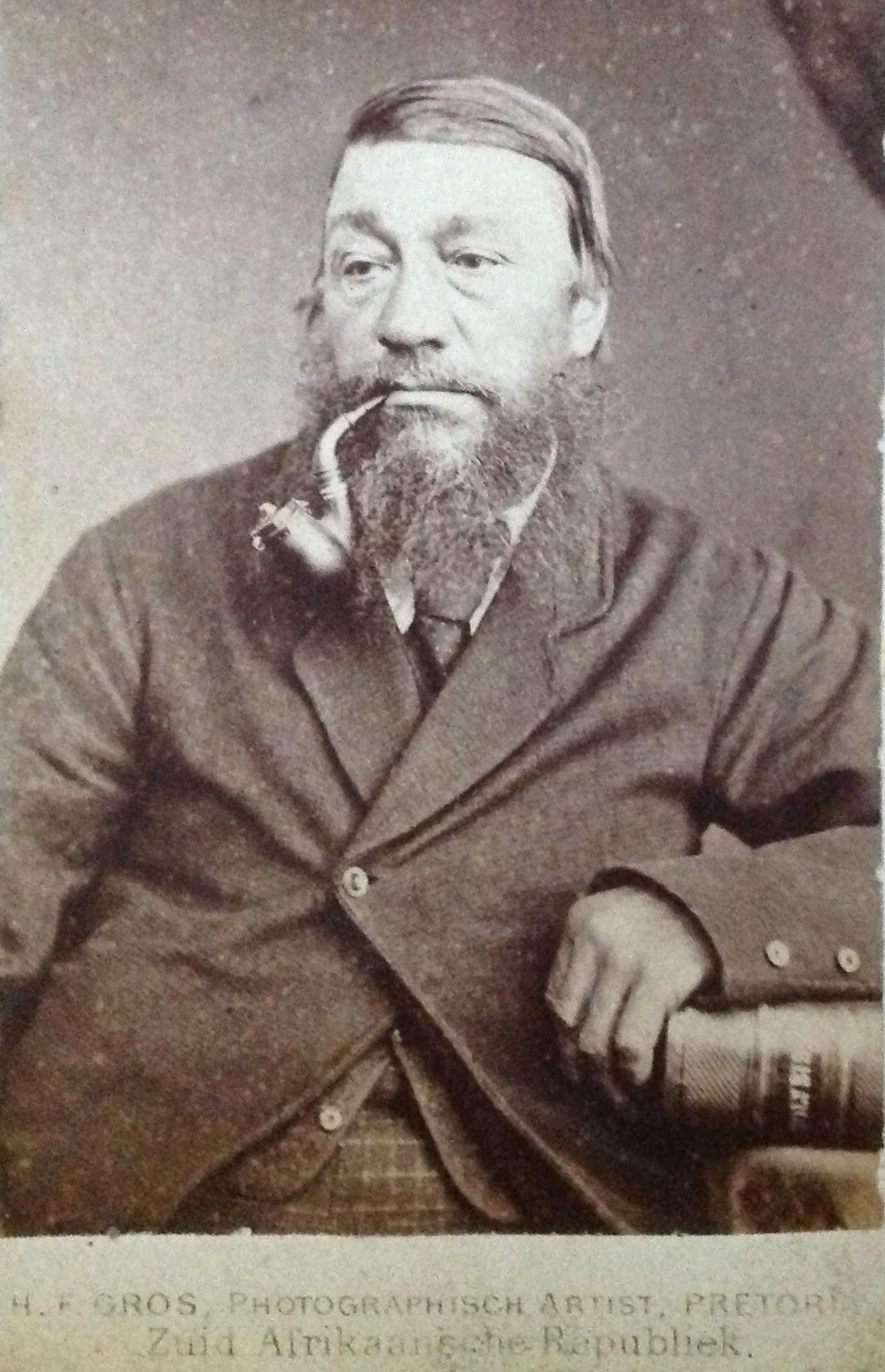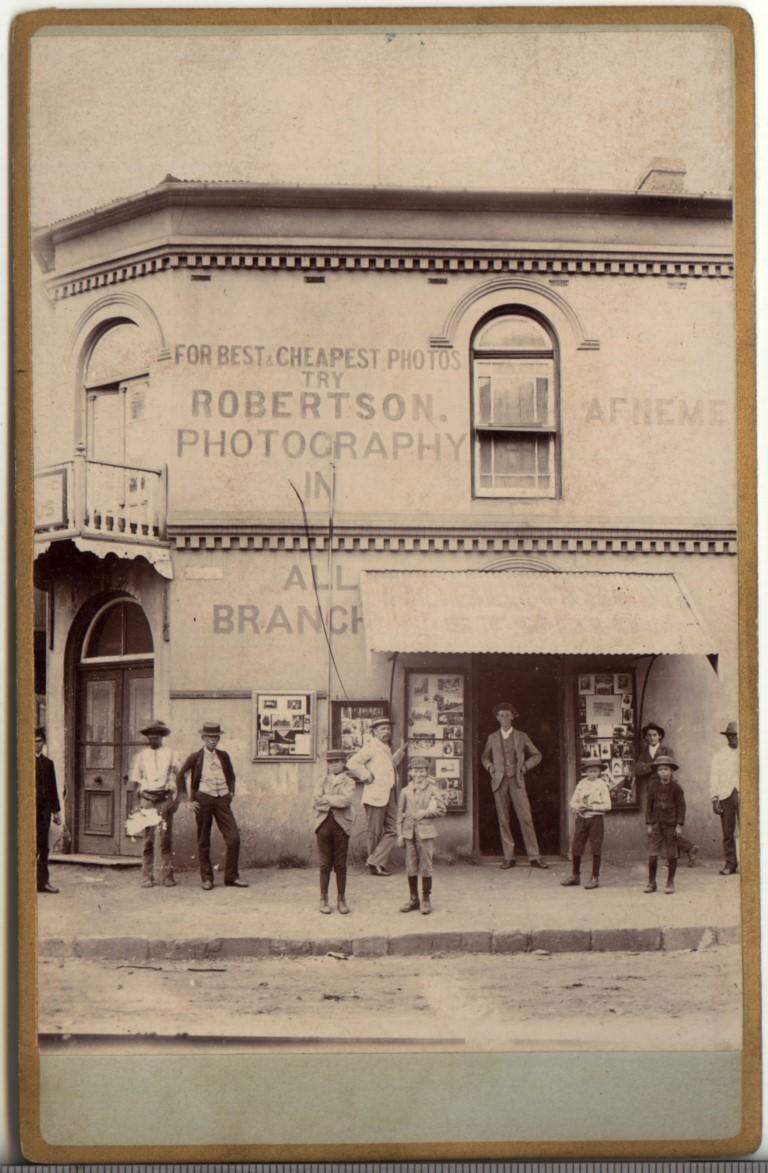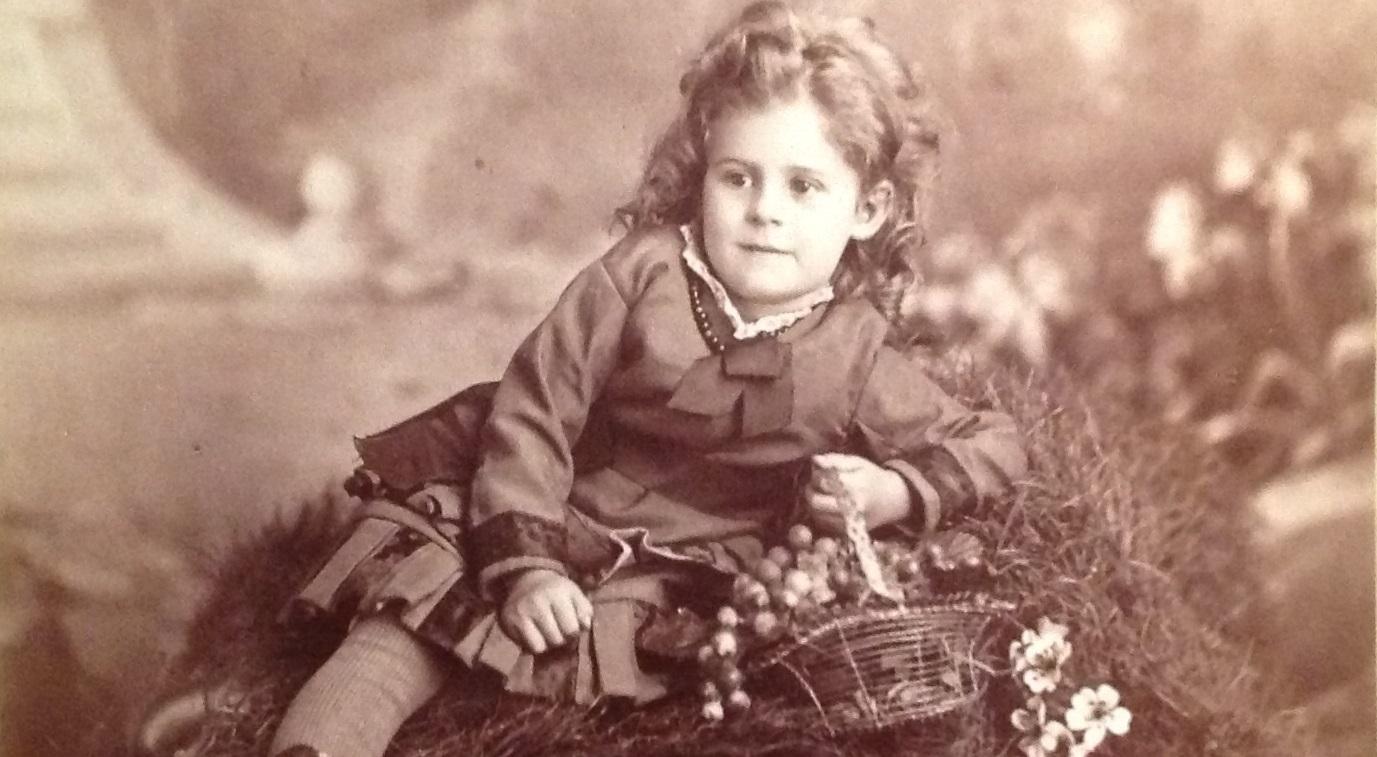
Disclaimer: Any views expressed by individuals and organisations are their own and do not in any way represent the views of The Heritage Portal. If you find any mistakes or historical inaccuracies, please contact the editor.
Little recognition has been given to Henri Ferdinand Gros for his outstanding contribution to the South African photographic history between 1869 and 1890. No other photographer has contributed to the then Transvaal photographic history like Gros. Without the Gros photographs, we would not have had an idea of what Pretoria looked like between 1875 and 1890. Gros certainly had the insight to identify the value of pictorial documentation. His photographic technique also was nothing short of perfection for those days, considering that the art of commercial photography was hardly 30 years old by the time he started off as a photographer.
South Africa’s history is significantly younger than that of Europe. The town of Pretoria, was only proclaimed in 1855, some 16 years after the invention of photography.
Although Cowan (1978) has published a rather extensive article on this pioneer photographer, this article attempts to broaden the available information on this interesting yet secretive individual. Research into Gros was complicated due to the limited information available on him.
Henri Ferdinand Gros
Gros was born in Switzerland at Petit-Saconnex (today part of Geneva) on 7 May 1842. He was the youngest son to Louis Gros and Fanny Escoffey.
Even in Gros’s early years his restless nature and inclination to travel regularly became evident.
Gros was issued with a passport to travel to England via France on 20 June 1865. His profession indicated on the passport was that of bookkeeper. In an 1878 South African photographic newspaper advertisement, Gros indicated that he had been active as a photographer since 1866. It therefore has to be assumed that Gros stayed in England for a while where he then obtained his skills as photographic artist.
Gros married Elizabeth Farren, eldest daughter to William Farren and Sarah Ridguord from Ludgate Hill in London. The couple got married in Pretoria on 28 July 1875 in the St. Albans church (which was only built during 1873).
From this marriage, only one child, a son, also named Henri Ferdinand Gros, was born. Henri junior was born in Pretoria on 30 June 1877. Henri junior was an English teacher during his adult life, presumably in Geneva.
A full-length photograph of Gros taken during 1902/03 at his home in Geneva (Courtesy: Museum Africa Bensusan photographic section, Johannesburg)
Arrival and movement in South Africa
Gros arrived in South Africa during 1869 at the age of 27. It would seem as if Gros first started off at Burghersdorp towards the end of 1869 with a fellow Swiss, Weber (Bull & Denfield, 1970). On 16 July 1870 he announced via the media that his Photographic Saloon would resume again. The assumption is therefore that Gros started this photographic studio in Burghersdorp, left it for a while only to return later, before moving on again to establish a photographic studio in Bloemfontein during 1871, named Weber and Gros.
An advertisement in the Diamond News confirms that Gros took over the photographic business of Weber and Gros during 1872. To date, the author has not identified any images produced at these two earlier Gros studios which were both clearly only in existence for a short period.
Shortly after Bloemfontein, or in tandem, Gros also opened the Superb Saloon studio at the Kimberley diamond fields.
An example of his studio work whilst based in Kimberley (Circa 1874). It was a rather unusual technique to apply colour to images during that era (Front and back of card).
Whilst at the Kimberley diamond fields, Gros in partnership with the Gray brothers, who were also active as photographers in Kimberley at the time, produced a photographic album titled The Diamond Fields (Circa 1872).
During April 1873 Gros advertised in the Diamond Field that he was about to leave for his native land and that he would only practise photography in South Africa for another month.
True to his restless nature, Gros was back in full force again in South Africa during 1874 as he toured the Lydenburg goldfields where he, amongst others, photographed Pilgrims Rest and the MacMac.
Some photographers may have moved through Pretoria in its earlier days, but Gros was the first to settle in Pretoria – the capital of the young Transvaal Republic. This was also the first for Transvaal. It was a bold move, for there was little to attract photographers at that time – a period when the photographic world was just beginning to emerge from the cumbersome wet-plate era (Cowan, 1978).
The Pretoria era and the three studios
Gros finally settled down in Pretoria during 1875 after he advertised during December 1874 that he had just arrived from the diamond fields. This suggests that he may have returned to Kimberley for a short while after his Transvaal stint.
- First Studio (January 1875 to April 1875)
Gros established his Portretgalerij (photographic gallery) in Pretoria during January 1875. This studio was based on Market Square (Church Square today) in the Arsenal Yard which was based at the back of the court house. This same bulletin suggests that Gros constructed this studio himself.
In one of his subsequent newspaper advertisements during 1875, Gros indicated his hours as being between 09h00 and 12h00 in still weather. In this same advertisement he also made the following request: Intending visitors who object being stared at while sitting, are kindly requested to come unaccompanied. During the first three months he invited eager sitters into his studio without any prior appointment, but during the last month he was based at this studio, he insisted, due to high demand, that sitters need to make appointments beforehand.
Gros was only at the Arsenal Yard studio for some 4 months. He advertised that he would not be in Pretoria for long, only to open his new Pretoria based studio during April 1875 - only a few hundred meters away from his previous studio.
- Second studio (April 1875 to around January 1878)
At the end of April 1875 he informed the public in another De Volkstem advertisement that he had now relocated his studio to the back of Mr. Perreira’s store (formally the Smithers residence), also on Market Square. Now his hours were now between 10h00 and 15h00.
Invoices issued to J.P. Kirsten for photographic work completed, dating 1876 and 1877, indicate that Gros charged £1.10 for a dozen Carte de Visite (small format photograph).
JP Kirsten invoice dated February 1876, charging for work done at his first studio (March 1875). Kirsten was also a freemason. Invoice suggests that Gros also photographed Burgers (President of the SA Republic), Brand (President of the OFS) and Southey (Lieut.-Governor of Griqualand West).
During October 1877, Gros placed a notice in De Volkstem informing readers that he would discontinue his practise until his new studio had been completed.
One of the earliest recorded Pretoria photographs by Gros (Circa 1877). Taken from church tower looking south (Market street). Building on the left is John Robert Lys’s home “Eyrie”- meaning: Inaccessible eagles nest
- Third studio and final studio (February 1878 to 1889)
Gros bought stand 376 on the corner of van der Walt Street and Church Street from R.F. Schubart on 10 September 1877. On 5 December 1877 a part of this land was sold to F.R. Larkins with a further section being sold to George McKenzie on 25 April 1878 (Pretoria Deeds office).
It was on the smaller remaining section that Gros’s studio graced Pretoria for more than 25 years. On van der Walt Street, a large double door apparently entered an enclosed courtyard, which at one time had a sort of hanging garden on a tall trestle. This garden was approached by a ladder (Dunston, 1975).
This new studio, initially called The South African Photographic Studio, and later renamed to H.F. Gros – Photographie Artistique, was the first double storey building of Pretoria. The studio was upstairs, whilst the dwelling was downstairs. This studio was in operation by February 1878.
Gros studio – Church street – looking west. The church building which burned down during 1882 appears in the background. (Circa 1881 image reproduced on postcard some 25 years later)
Gros's studio is the double storey building in the middle of the image (photograph circa 1880) – Photograph assumed to be one by Gros himself
A further article in De Volkstem, referring to Gros’s new studio, made the following comment:
The abominable camera with its bobbing operator is done away with and the sitter sits quite at his ease while the photographer is out of sight and takes his photo by a process that is his own invention. This technique Gros himself referred to as the Grososcope.
Photographic activity during the Siege of Pretoria (1880/81)
The outbreak of hostilities on 16 December 1880, which was followed almost immediately by the beleaguering of Pretoria, was the making of Gros as much new material was now available for Gros’s history-recording camera. With the influx of military and civilian officials and their families into Pretoria, Gros was kept busy photographing groups and individuals.
Taken during the 1st Boer War during the siege of Pretoria (Circa 1880/1). British soldiers at a graveyard
The Graphic of 28 May 1881 illustrated, by means of engravings produced from Gros photographs, a number of aspects of life in Pretoria during the siege. Engravings were the only means of producing a visual representation of occurrences, as the reproduction of photographs in the printed media was not possible during these early years. Instead, engravings were used, made from photographs by competent artists (Cowan, 1978).
Gros also advertised that he produced photographs in magic lantern slide format as early as 1881 which suggests that some magic lantern slides produced of the siege may also exist.
Bellars (1972) also mentioned the work done by Gros during the conflict:
Mr Gros … made many very interesting photographic sketches of various camp scenes, and groups of officers and men, during the investment. When hostilities were over, and the Boers flocked into the town, this gentleman was carrying on a large business in supplying departing friends with reminiscences of the siege and taking portraits of our former enemies – so much so, that his supply of chemicals and other photographic materials soon became exhausted and work had to be given up until fresh stores could be obtained from Durban. Some of the Boer commandants taken were fine good-looking men, and presented a very effective appearance in their martial equipment or rifle and bandoleer. Both assistant Commandant General Hendrik Schoeman and Commandant Henning Pretorius, of the Red House and Elandsfontein lagers respectively, came up to this description.
Gros was also responsible for one of the earliest experiments with microfilm in South Africa. Charles du Val wrote a long despatch for the London Daily Telegraph, titled Pretoria beleaguered. Gros then reduced this to a size of two square inches. This precious piece of film was fixed in a cleft stick and sent off to Natal by native runners. It never reached London, but the Natal Mercury published the despatch in four parts during May 1881 (Allen, 1971).
Gros activities and achievements
Gros was without doubt a zealous photographer entirely devoted to his art. What differentiated him from other photographers was his passion for outdoor photography, as well as his financial acumen. Due to his bookkeeping background and his need to keep detailed financial records, Gros was financially independent, a level that not many other Pretoria based photographers achieved during those years.
Gros was clearly a man with many interests in that he informed potential customers that his studio would be closed for a while during 1881 as he had to perform his duty as a jury member. Gros was also a mason member and treasurer of the Aurora lodge in Pretoria. This “primitive temple” (Lockhead, 1980) was based on the corner of St. Andries Street and Vermeulen Street. This Dutch freemasonry lodge was established in June 1868 but the building was destroyed by a flood in the late 1870’s resulting in a decline in interest and the resultant closure of the establishment during June 1879 (Laubscher, 1993 & Lockhead, 1980).
On 12 July 1882 Gros placed the following interesting request in De Volkstem: Anybody that owes him money to pay before 22 July that same year. The Kirsten invoice (see image above) confirms that some of Gros’s customers were in arrears by up to a year.
A census conducted in Geneva on 10 August 1883 suggests that Gros was back in Switzerland for a while, as this census has on record that the Gros family stayed at L’Ecole-de-Chimie Street in Geneva. This same census records Gros’s profession as photographer. Again, true to his nature he returned to South Africa.
Carte de Visite format photographs (Circa 1878). The image on the right confirms his activity in Potchefstroom as Gros travelled to Potchefstroom on a regular basis to conduct photographic studio work there. The lady has been recorded on the back of the image as a Mrs Bergsma. The image on the left is the back of a Carte-de-Visite photograph showing a sketch of the Gros studio.
A Cabinet Card format photograph by Gros of Godfray Lys (taken during 1881) who, like his father Robert, was also a freemasonry (Laubscher, 1993).
As mentioned earlier, Gros was not content with his pictures of Pretoria, for he toured the Transvaal and obtained a large number of views, many of which he subsequently published under the titles Picturesque Aspects of the Transvaal (1888) and Pictorial Description of the Transvaal (1889). South African libraries, such as, the Johannesburg library, Mendelssohn library, Killie Cambell Africana library and the Natal Society library hold copies of these photographic albums (Also see additional Gros images included in the Rod Kruger article published on theheritageportal during 2016).
Photo taken during his Transvaal tour (1888/89)
Some of these volumes also exist in Europe under the name “Gros-Farren”, Farren being his wife’s maiden name. This was probably done to distinguish himself from many others in Switzerland with the surname Gros. The cover pages of some of these volumes also exist in French.
The production of these photographs must have been a colossal task with the 10 x 8-inch glass negatives, for, during the 19th century, the printing of positives was done by daylight (Cartwright & Cowan, 1978). To obtain good quality photographs, good weather was required. These excellently preserved photographs comprising landscapes, native life, mining activity, town views and street scenes provide a comprehensive, socially significant document of life and conditions in the Zuid-Afrikaansche Republiek from between 1882 to 1890 (Cowan, 1978).
Gros photographed many well-known personalities of the time. On some of Gros’s Cabinet cards and invoices, he indicated that he has photographed well-known personalities such as Lord Wolseley, Sir Evelyn Wood, Sir Bartle Frere; President T.F. Burgers; President J.H. Brand and R. Southey the Lieutenant Governor of Griqualand West. Gros also succeeded in photographing Chief Sekukuni in the prison yard (Cowan, 1978). Interestingly he makes no reference to the fact that he also photographed Paul Kruger.
Carte-de-Visite format photograph by Gros of a younger Paul Kruger (Circa 1876). This image would therefore have been taken in Gros’s second studio whilst in Pretoria
Laubscher (1993) points out that Gros also produced Pretoria’s two oldest and best-known sport photographs of its rugby and cricket team during 1880.
Gros also produced Oleographs, a combination of various photographs into one photograph. An example of this would be the fine composite picture of the members of the Volksraad during 1885.
Gros was awarded a silver medal during a photographic exhibition in Paris during 1889. He was also an honorary member of the photographic society of Geneva.
Whilst based in Pretoria, Gros and his wife became close friends of George and Janey Heys. After 1892, the Heys couple visited the Gros couple on various occasions while travelling Europe (Allen, 2001).
Photographic studio assistants
It has been suggested that Gros had various assistants during his stay in Pretoria.
First it was Jules Perrin, a fellow Swiss, as on a 1884 Carte-de-Visite (small format photograph), Perrin’s name appears with Gros’s, indicating that he is the “successor” to Gros. Some photographs produced by Perrin have imprinted on the back of the image that they originate from Perrin’s studio. It is suggested that Perrin however still operated from the Gros studio.
Interestingly Gros advertises in De Volkstem on 19 July 1882 that he has been forced due to poor health to sell his photographic practise, equipment and negatives to Jules Perrin. It is recorded that there were some 10 000 studio based negatives (would have been glass based negatives) which Perrin agreed to reproduce on request from previous sitters.
It is not clear whether this transaction went through at the time in that Gros clearly did not cease his activity as a photographer in that he was still placing advertisements as late as 1886.
Perrin later established himself as photographer in Barberton from 1889 onwards.
William Plumbe and Colin Robertson followed in Perrin’s footsteps as photographic assistants. Plumbe left the service of Gros during 1889 to start a photographic business with Charles Bradshaw. This photographic establishment was known as Plumbe and Bradshaw (Laubscher, 1997).
Subsequent ownership of the Gros studio
Gros sold his property to A.W. Baker on 23 January 1890. Robertson seems to have taken over the Gros studio at this stage, probably renting it from the new owners, African City Property Trust.
Robertson only replaced the signage a number of years later in that for more than ten years after Gros left the country, the sign H.F. Gros was still attached to the balustrade of the balcony, with the studio still occupied by Robertson and the ground floor by H.W. Brouwer, Horlogiemaker and Jeweler.
Studio owned by Robertson
A 1906 postcard indicates that photographers Nicholls and Bryne occupied the old Gros studio at that stage. During 1908 Bryne had broken away from Nicholls, who still remained in the Gros studio. Just before the building was destroyed around 1912, Dunston (1975) suggests that another longstanding photographer, J.C. Munro also occupied it.
The end of an era
From 1886 onwards, Gros seems to have discontinued advertising in the weekly newspapers. It is not clear when Gros returned to Switzerland. As Gros sold his studio in 1890, the author suggests that Gros returned between 1890 and 1892. Gros retired on his return to his country of birth. If he returned during 1892, at the age of 50 (after 23 years in South Africa), he still lived for another 23 years in Geneva.
Elizabeth Gros passed away on 23 June 1914, while Henri passed away on 18 August 1915 – at the age of 73. Both died at their home Villa Pretoria, at Grand Lancy, a village in Geneva. At the time of his death, Gros left an estate of £1700 in Pretoria.
Many of Gros’s photographs survived but with the Barnett Brothers’ name on them. When Gros left Pretoria, the Barnetts bought all his photographic plates. It is not clear whether these are only the photographic plates produced post the 1882 announcement that Jules Perrin took on some 10 000 plates, or whether Perrin himself sold all Gros images in his possession to the Barnett Brothers.
Copyright protection then was not as fierce as today. The Barnetts went through the images methodically scratching out Gros’s name and replacing it with their own (Not uncommon for those years). On some of the plates Gros’s name can however still be identified.
Gros photographs are, and have been used extensively by researchers and historians, often without acknowledging this exceptional photographer.
Did Gros realise the long-term value of his contribution whilst active in South Africa? He more than likely had the inert understanding of the future interest and value that his pictorial documentation would result in.
Ironically, Gros on regular intervals between 1873 and 1883 indicated that his stay in South Africa is drawing to an end, only to either return or move to another location. Gros clearly was exceptionally curious or just became bored quickly. If it was not for this restless nature, this accolade to him and his exceptional work, some 120 years on, would not have been possible.
References
- Allen, V. (1975). Kruger’s Pretoria – Buildings & Personalities of the city in the nineteenth century. Cape Town: Balkema.
- Allen, V. (1999,2001). Communication via various emails.
- Bellars, L. (1972). The Transvaal war 1880 – 1881. Cape Town: Struik.
- Bull, M. & Denfield, J. (1970). Secure the Shadow. Cape Town: Terence McNally.
- Cartwright, A.P. & Cowan, N. (1978). The Old Transvaal 1834-1899. Johannesburg: Purnell.
- Cowan, N. (1978, September). The photograficana of H.F. Gros. Africana Notes and News (99-104).
- De Volkstem (1874, 26 December)
- De Volkstem (1875, April & 21 July)
- De Volkstem (1875, 13 & 20 November)
- De Volkstem (1877, 4 July & 17 October)
- De Volkstem (1878, 20 February & 5 March)
- De Volkstem (1882, 12 July & 19 July)
- De Volkstem (1885, 3 December).
- Diamond News (1872, 9 March & 29 May).
- Diamond Field (1873, 23 & 26 & 30 April).
- Dunston, L. (1975). Young Pretoria 1889 – 1913. Pretoria: Heer.
- Hardijzer, C.H. (2002). H.F. Gros – Africana Society Pretoria – Yearbook 19 (Page 32 to 39).
- Laubscher, L. (1993). ‘n Ses vir die speaker – Sport in Ou Pretoria. Pretoria: Unpublished.
- Lockhead - State Library (1980). Lockhead’s Guide, handbook and directory of Pretoria 1913. Pretoria: Reprint No 89.
- National Archives – Pretoria. Estate 27641 (H.F. Gros).
- Piguet, M. & Barrelet, J. (12 March 1996 & 27 March 1996). Written communication – Archives d’Etat – Geneve.
- Pretoria Deeds Office (Micro Film holder 76 – Reference 1989 2743 2910).
The valuable contribution and input provided by following individuals is also acknowledged:
- Fellow photo-historian, Hugo Tomyska from Geneva, Switzerland;
- Pretoria historian, Rosa Swanepoel
All the photographs included in this article (with the exception of four) form part of the Hardijzer photographic research collection.
About the author: Carol is passionate about South African Photographica – anything and everything to do with the history of photography. He not only collects anything relating to photography, but also extensively conducts research in this field. He has published a variety of articles on this topic and assisted a publisher and fellow researchers in the field. Of particular interest to Carol are historical South African photographs. He is conducting research on South African based photographers from before 1910. He is also in the process of cataloguing Boer War stereo images produced by a variety of publishers. Carol has one of the largest private photographic collections in South Africa.
Comments will load below. If for any reason none appear click here for some troubleshooting tips. If you would like to post a comment and need instructions click here.

